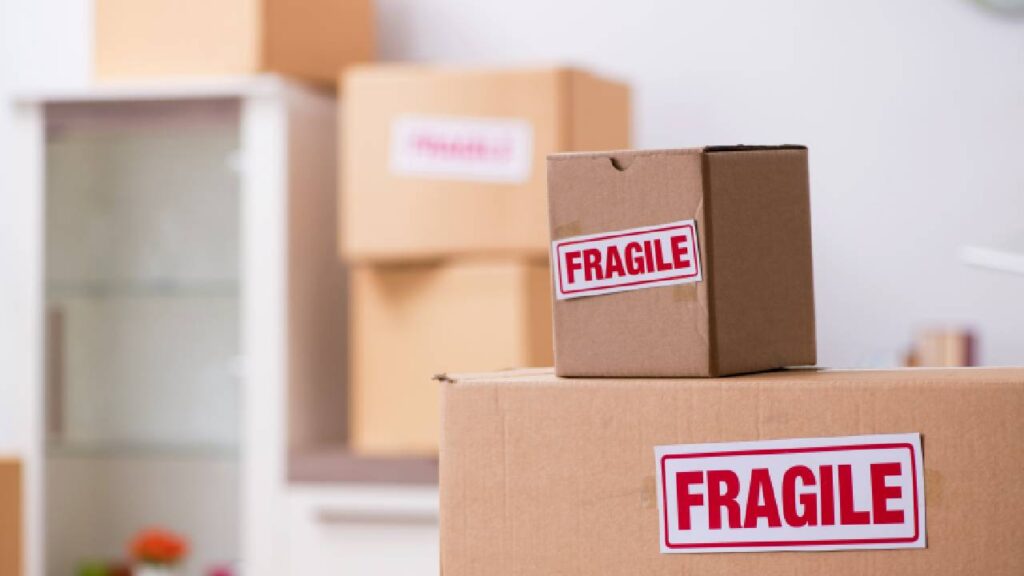
21 Nov Apartment Moving Guide: Navigating Tight Spaces and Regulations
Apartment hunting and moving can be a thrilling experience, but it comes with a full spectrum of challenges. Although moving an apartment can be less work than house moving in scale, it consists of almost identical tasks to be catered to.
Urban areas generally consist of apartment complexes that hold limited spaces. Adequate planning and understanding are required to maneuver through this ordeal. Apart from this, the apartment building owners have set criteria for the renters they want to allow into the building. Also, to reduce stress, hiring the right movers can bring relief from packing and transporting all your belongings.
Creating a checklist, and setting a timeline for the move can assist with the whole process. In this apartment moving guide, we’ll discuss all issues while transferring apartments and associated restrictions. We also provided apartment packing recommendations in detail.
Understanding Lease Agreements
Legally binding contracts outline the terms and conditions of the tenant’s stay. After finding an apartment, it is important to fully read and understand these conditions before signing it. Whether it’s a short-distance or long-distance move, transitioning between apartments consists of various moving-in and out regulations that should be carefully considered.
Move-In/Out Regulations
Following these can ensure the process is smooth without any interruption.
Move-In Regulations
- Inspecting Property: This requires a walk-around of the apartment a day before the tenant moves in. Pre-existing damage and other issues can be discussed to make the move easy. You can discuss the repairs that need to be made to have a clear understanding of the building’s condition.
- Utilities: The lease document also contains details about all the amenities that come along with the apartment. Electricity and gas etc are mentioned in these.
- Guest and Subletting Policy: The lease might also contain all details on having guests stay over at the apartment. It also elaborates on the agreement on subletting the apartment If that isn’t in the cards.
- Rent Payment Details: It also mentions the due date of the monthly rent payment. It mentions any penalties that are associated with missed or late payments.
Move-Out Regulations
- Notice Period Provision: The agreement mentions a provision of a notice period of a specific time before you plan to leave the time. It is typically 30–60 days.
- Condition of Property: The lease clearly explains that the property is to be returned to the same condition that it was rented on. Any necessary repairs or maintenance should be catered to before the tenant leaves the place. Not complying with these regulations can result in loss of security deposit or other consequences.
- Cleaning Requirements and a final Walk-Through: Thorough cleaning of the apartment, such as of carpets or other areas, is mentioned within the lease. The landlord will make a final walk-through to ensure that the apartment is in the same condition after you hand him the keys.
Deposit Considerations
When getting into a lease agreement with a landlord for an apartment, a deposit is considered. The key points that should be considered regarding this are as follows.
- Security Deposit: The tenant is required to provide a security deposit that can cover any unpaid rent or possible damages to the property in the case. Its amount is generally mentioned within the lease agreement. It can vary depending on apartment size, location, and other factors.
- Refundability: Most deposits are refundable once you move out of the apartment. Read the lease terms If there is any non-refundable fee, such as for application or keeping pets included.
- Interest and Deductions: Understand that under the law, the landlord is supposed to pay you any interest on the deposit. Also, ensure which conditions require deductions from the deposit by the landlord.
- Timeline: Read through the timeframe that is also mentioned, in which you can get your deposit back after you move out of the apartment. It should be between 30–45 days.
Packing for Limited Space

Now that you have understood an important apartment moving guide tip: the Lease Agreement relevant to the apartment moving, the hard part comes, which is packing and moving. Doing it yourself can be demanding and let the individual lag on their schedule. Another Apartment Moving Guide tip is strategic planning, which is required to stay on top of this task. Here’s everything you need to know to pack for limited space.
Decluttering Before the Move
- Starting fresh in the new apartment can be an energy booster and prove to be calming. Decluttering all the junk before you move out of the apartment is a smart move and one recommended in this apartment moving Guide.
- Go room each room. Assess all belongings and organize them.
- Make a pile of unwanted things, and you can sell them.
- You can also donate the stuff that is in good shape, which keeps the needy in the cycle as well.
Efficient Packing Techniques
Aching effectively can be liberating as it takes away from the haphazard situation on a moving day.
Consider Proper Packing Material
- Use big and small-sized cardboard boxes to pack essentials. You can also get free-used boxes from certain areas, which can be extremely useful for holding bedding, fragile items, glassware, etc.
- Packing tape is an essential element that keeps the boxes sealed during the moving process. It ensures that the belongings don’t move during any road bumps or loading.
- Bubble wrap is also an integral element that offers a cushioning effect. This can be wrapped around items or filled in boxes to avoid any damage or breakage of stuff.
- Vaccum-sealed storage bags are a quick tip. These reduce the volume of the item by 80% and are ideal while moving in small spaces. These are a great alternative to using boxes.
Label Boxes

- Another technique is packing room-by-room.
- Creating your labeling system can also help place the boxes in designated spots when transported to the new apartment.
- Label and color code the boxes according to the rooms they are supposed to be in. This is a quick organizing strategy that saves a lot of time and energy. It also facilitates unpacking.
Moving Day Logistics in Apartment Complexes
Staying in touch with the management for a single-day move is essential to facilitate this process.
Coordinating with Management
- Give the management at least two weeks’ notice before you plan to move. That way, they can schedule the elevator in advance and have everything ready for your transfer. You can then be saved from last-minute moving.
- Specify the dimensions and manufacturer of your moving vehicle for management. They may then decide where to park your vehicle and how to facilitate your transfer.
- Inquire with the complex’s administration about any move-in requirements. Some apartments prohibit elevator and loading dock usage on move-in and move-out days.
- Develop a relocation strategy with the management. A space set aside for loading and unloading the moving vehicle. A timetable for loading dock and elevator use. Arrangements should be made for the disposal of moving boxes and other packing items in an eco-friendly way.
- Organize your moving route in advance. Take into account the apartment complex’s layout as well as the size of the moving truck. As a result, you’ll be better able to navigate around obstacles and tight curves. AirVan Moving Company offers trucks, in this case, which can load all your belongings with free quotes. Their drivers are licensed and skilled to aid this.
- Take care to avoid disturbing your neighbors. Do not obstruct any entrances or exits. Make the moving day as effortless as possible for yourself and the people around you.
Elevator and Parking Considerations
- Another apartment moving guide consideration is making sure you book the elevator in advance. Doing so will increase the probability that the elevator will be available when you require it.
- Take note of the parking and loading conditions. Moving trucks may park in defined areas and load/unload at loading docks at certain residential buildings. Some establishments may only allow street parking.
- Think about how you will transport heavy objects. Freight elevators allow residents to transport heavy objects, such as furniture and appliances, between floors of an apartment building.
Conclusion
Moving to a new apartment can be exciting but daunting at the same time. Learn the rules associated with the apartment building and the deposit that you need to provide to secure the apartment. Apart from this, packing smarty and coordinating with the building management for moving day can streamline this process. We hope this article on apartment moving guide was of maximum help to you.



